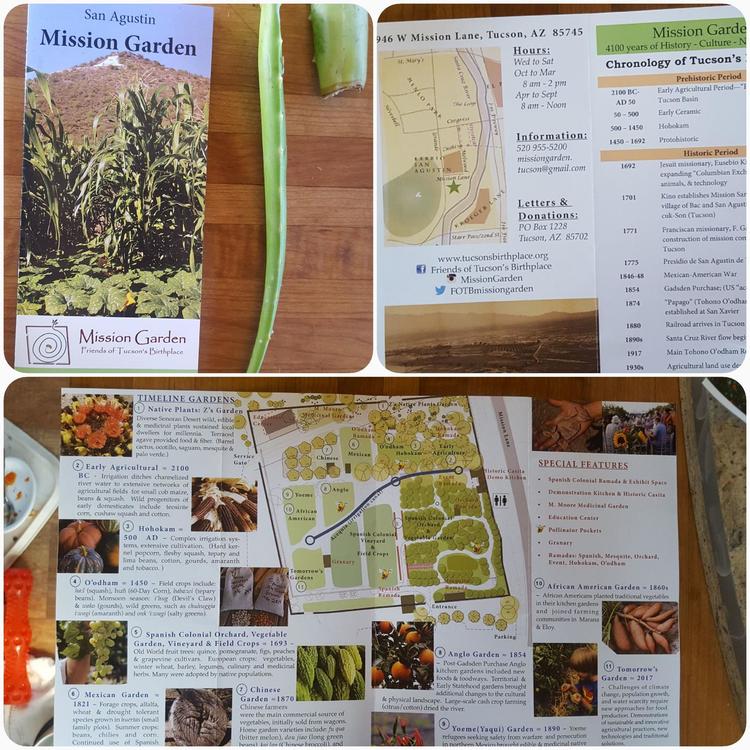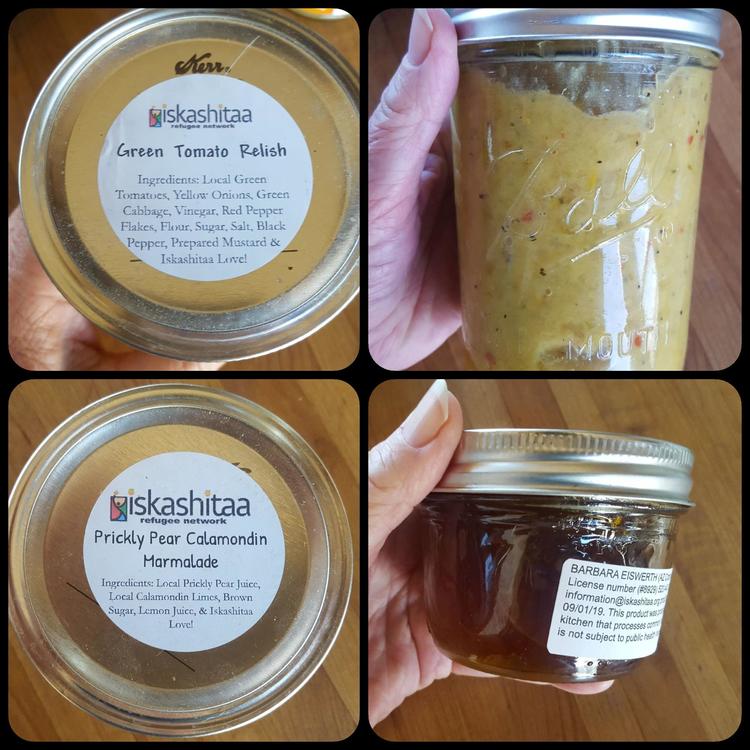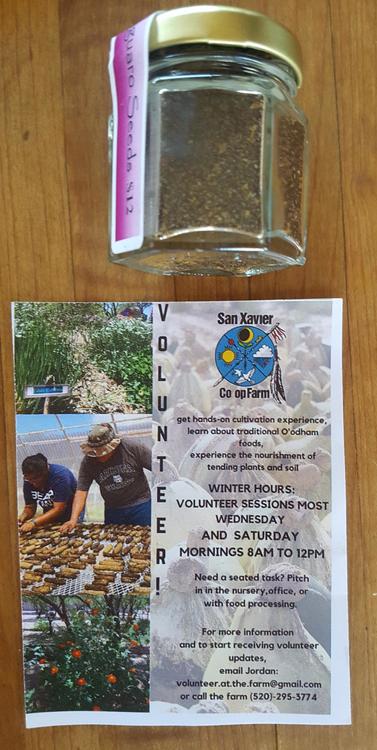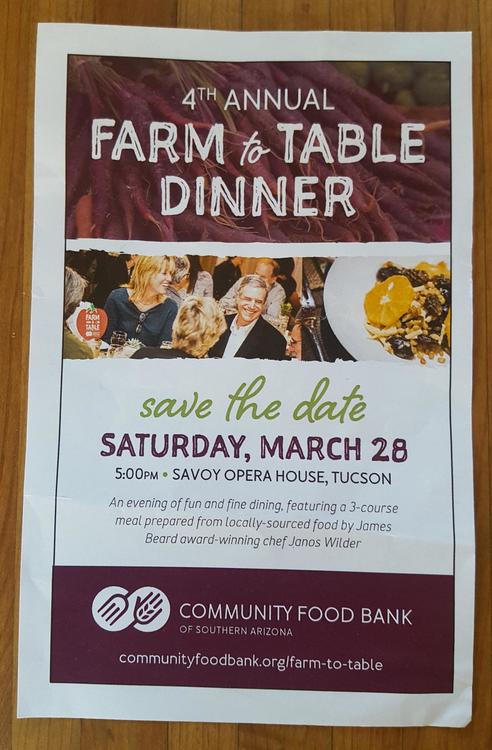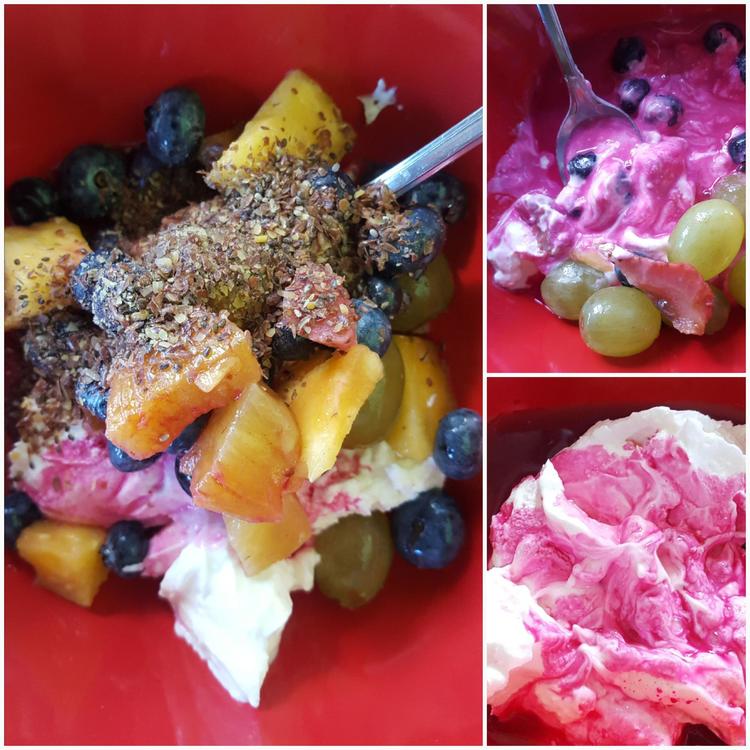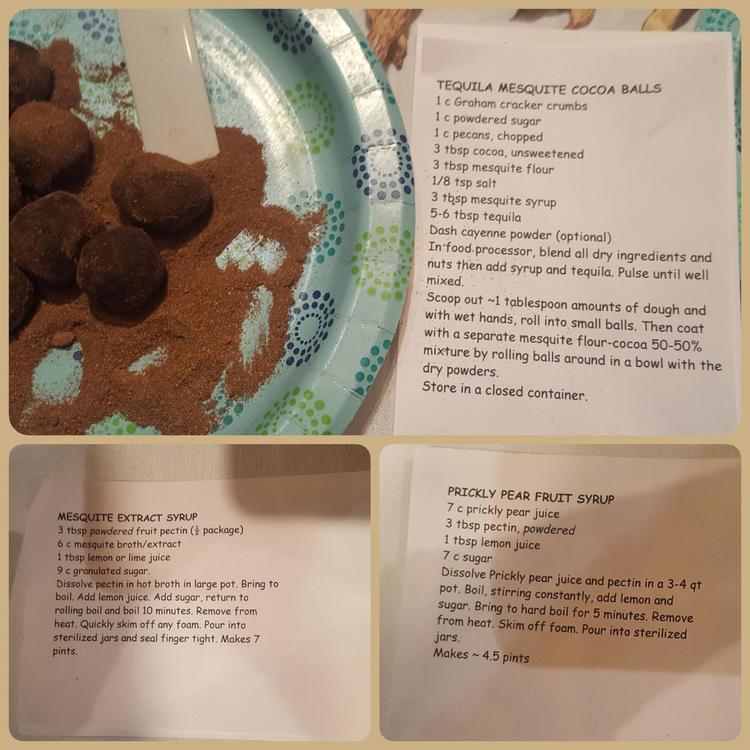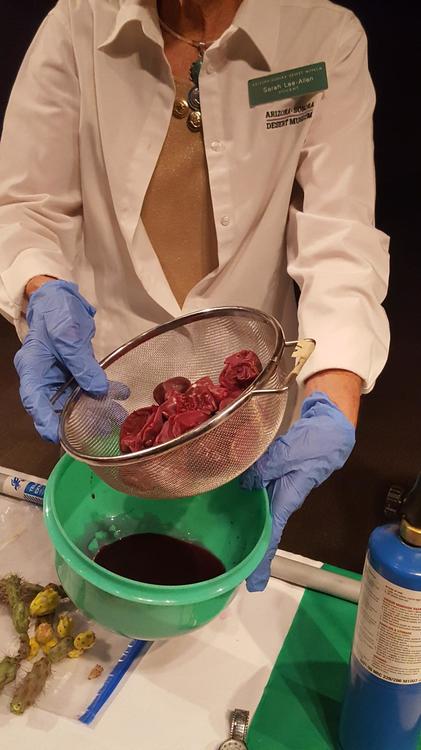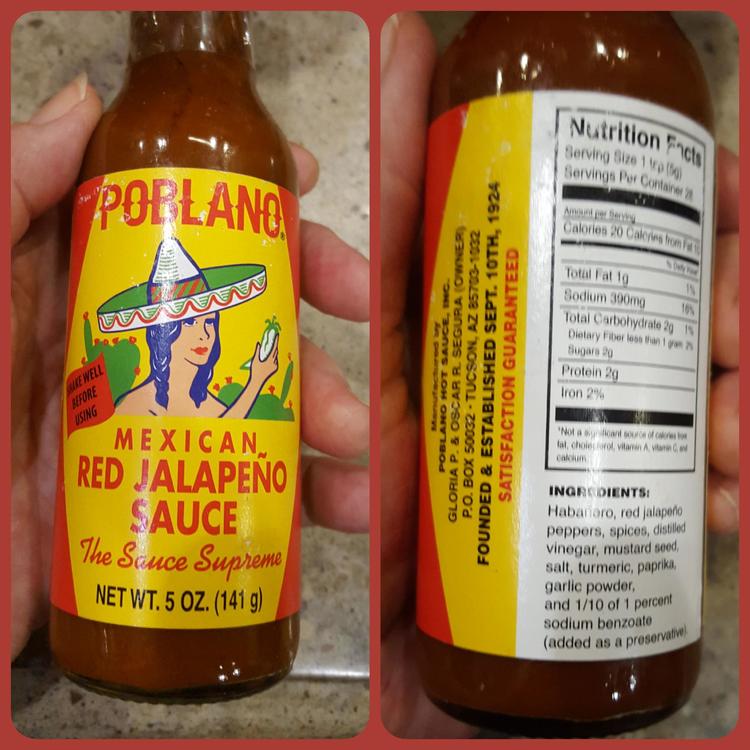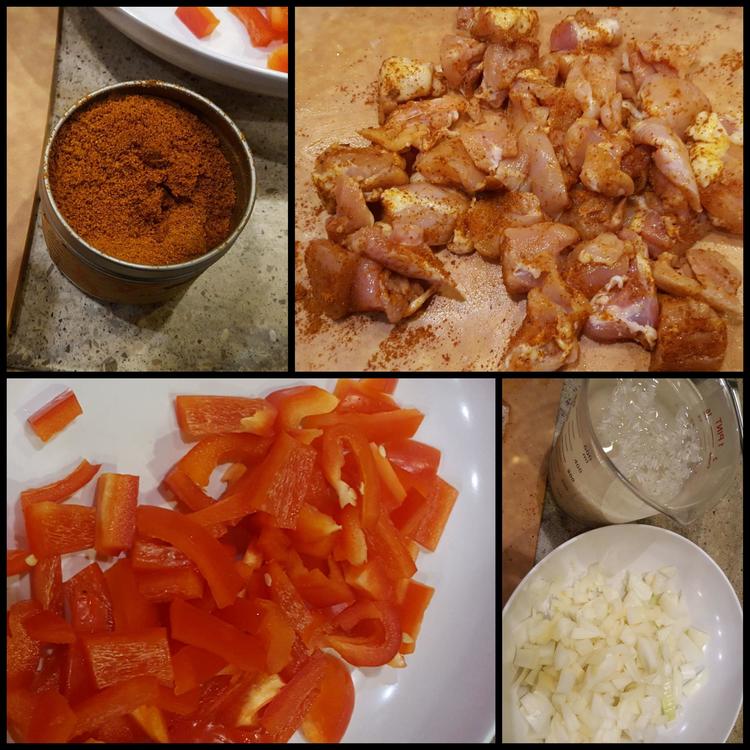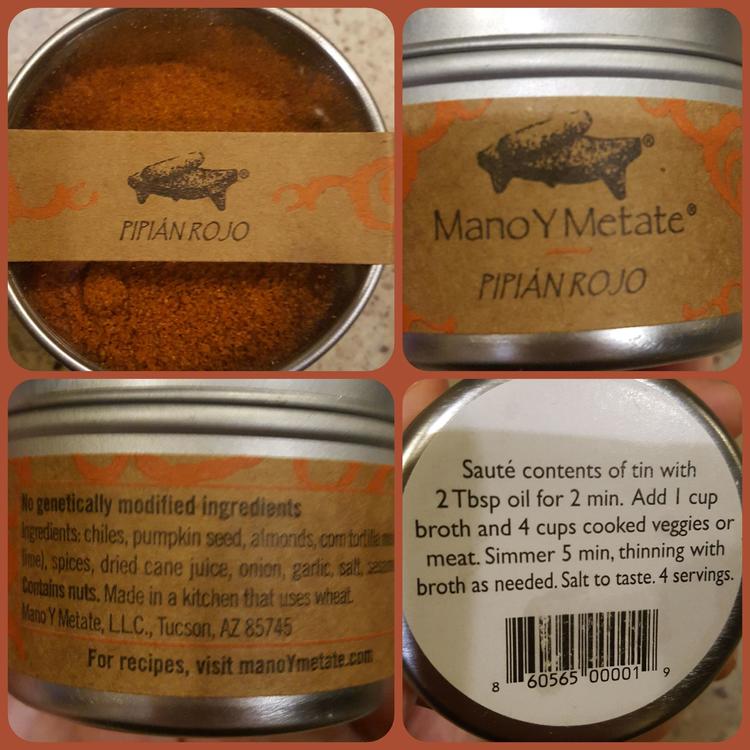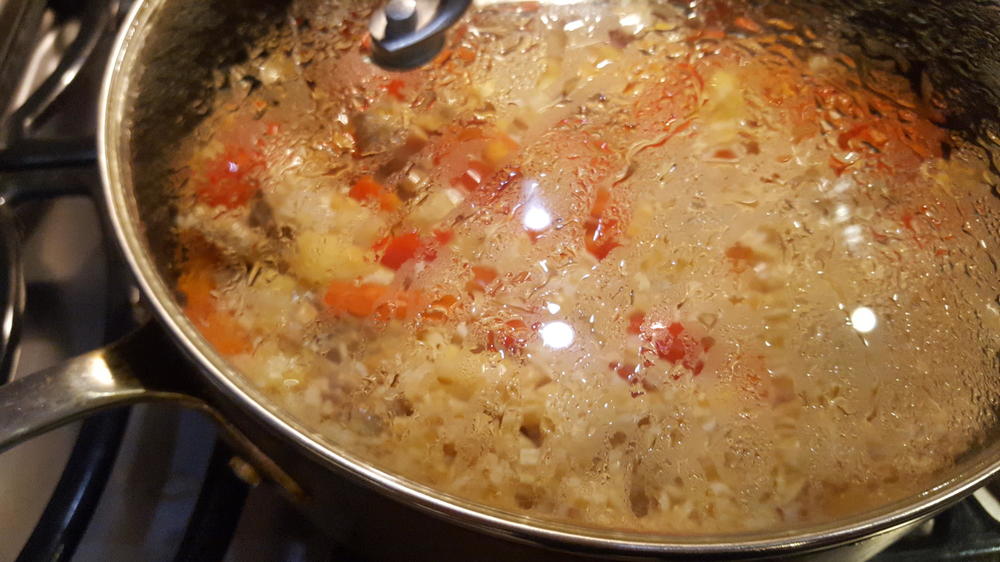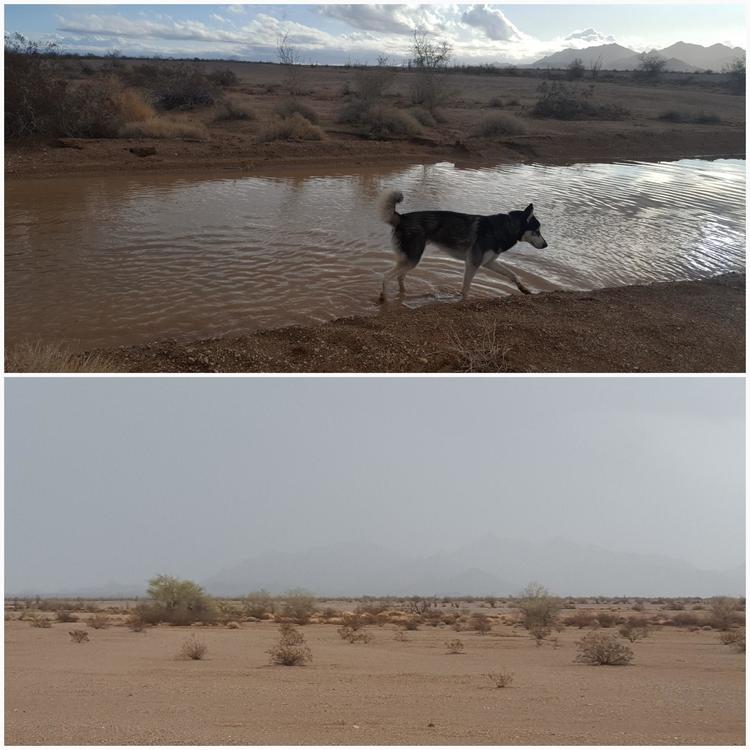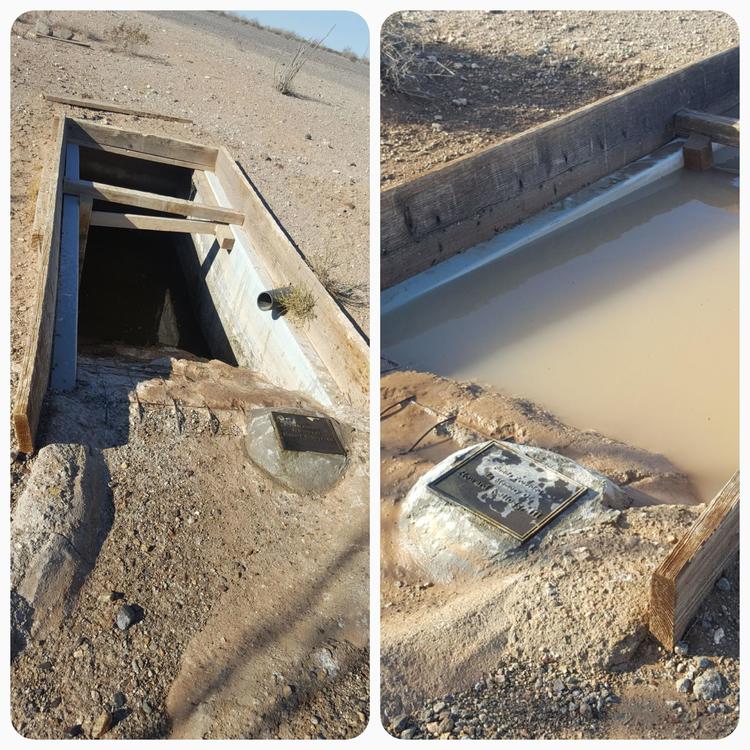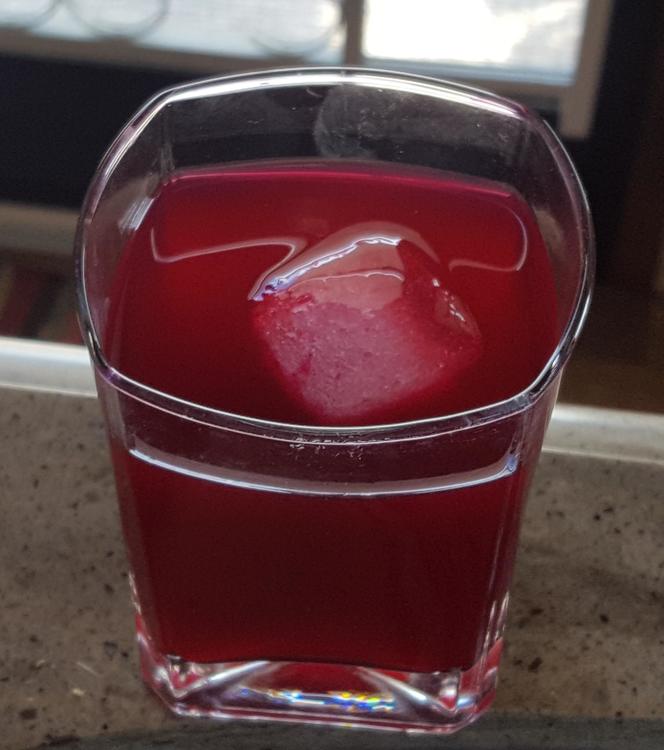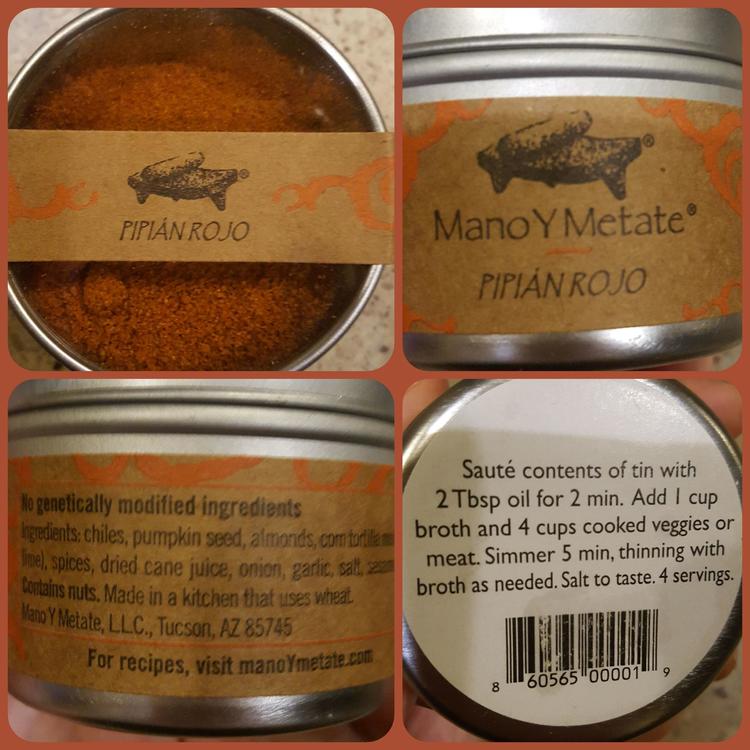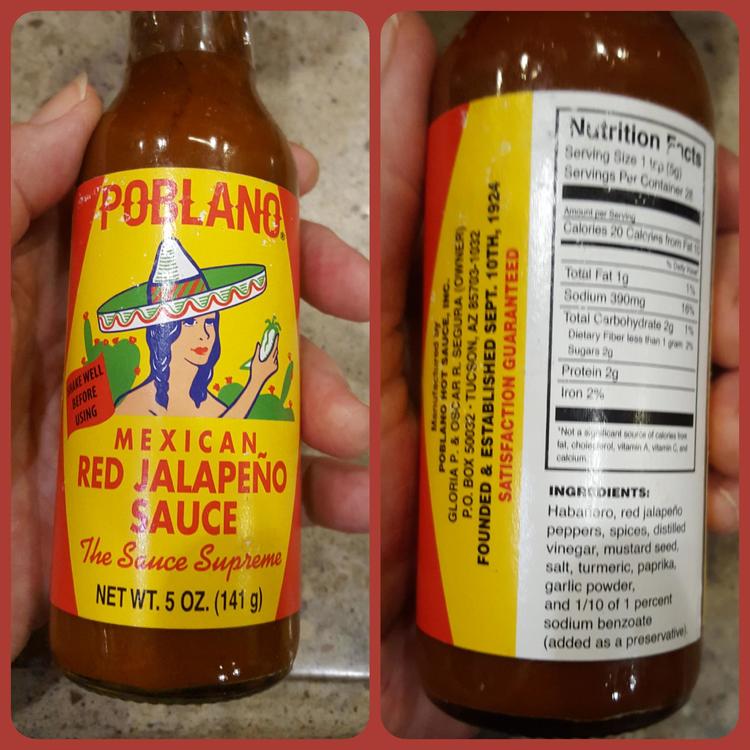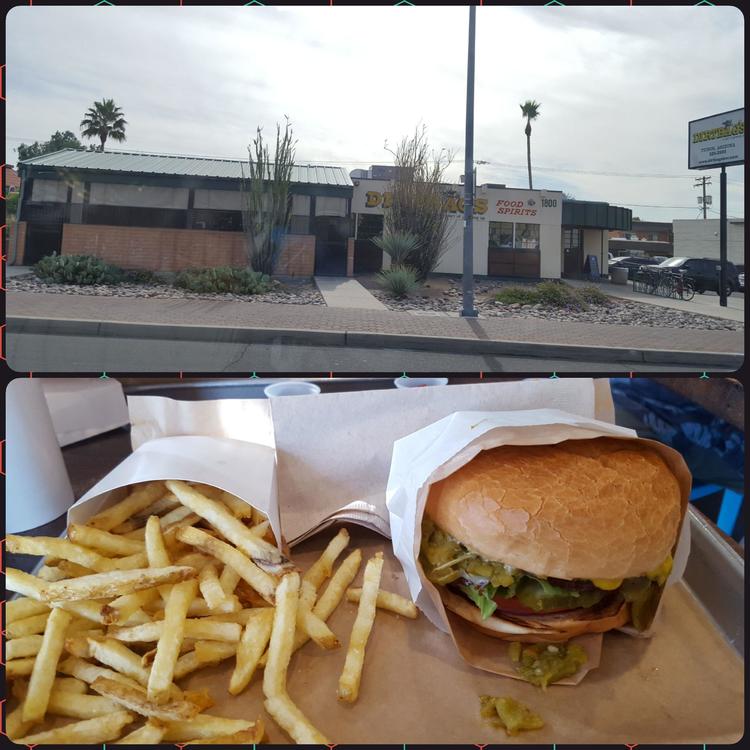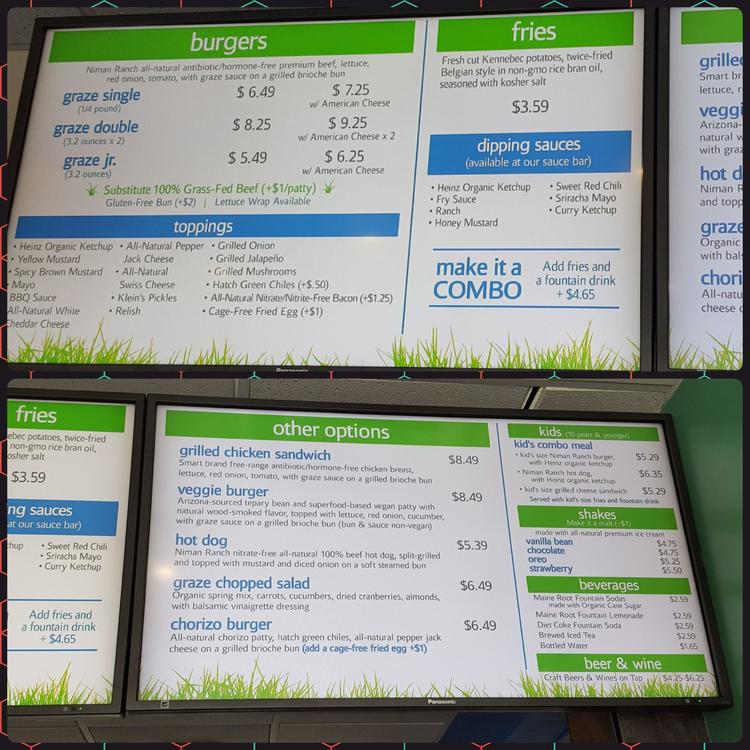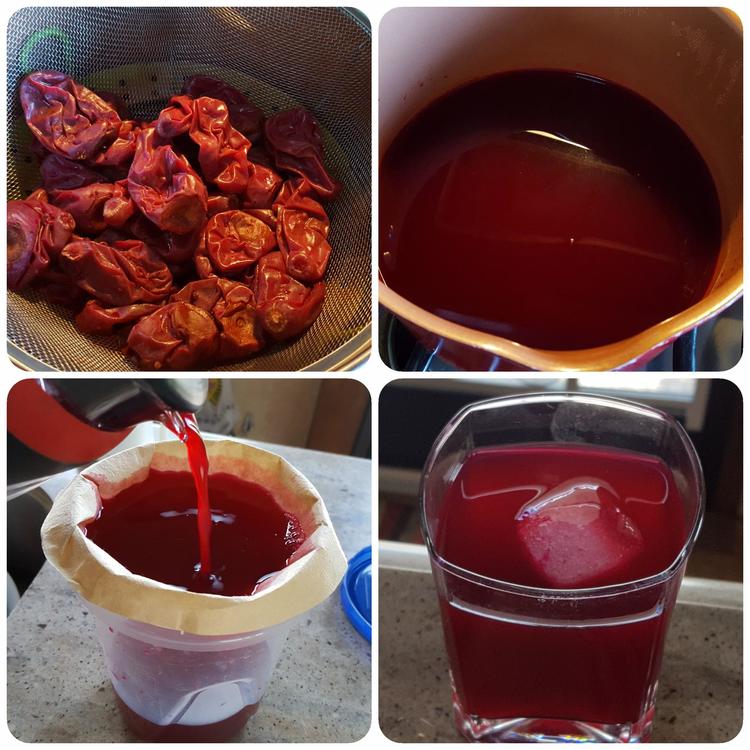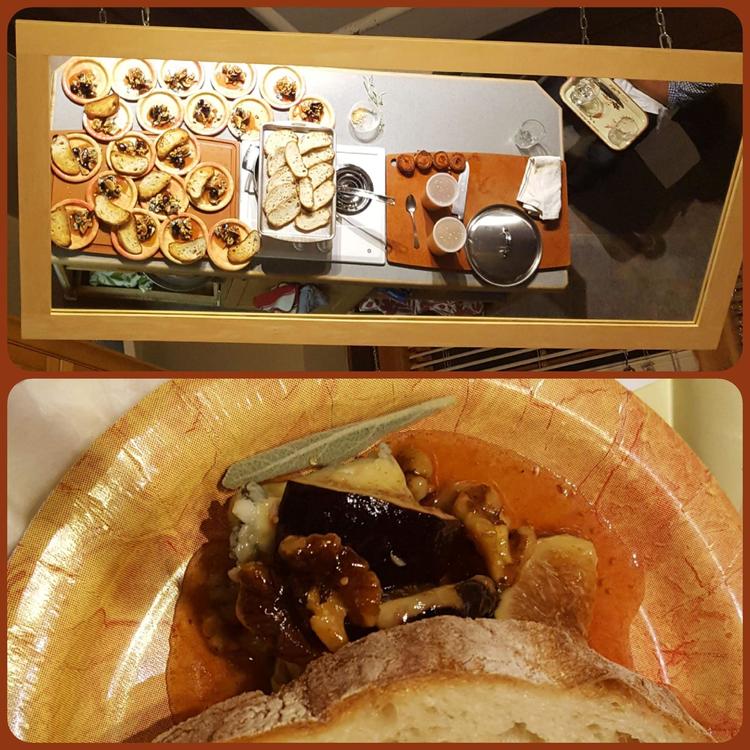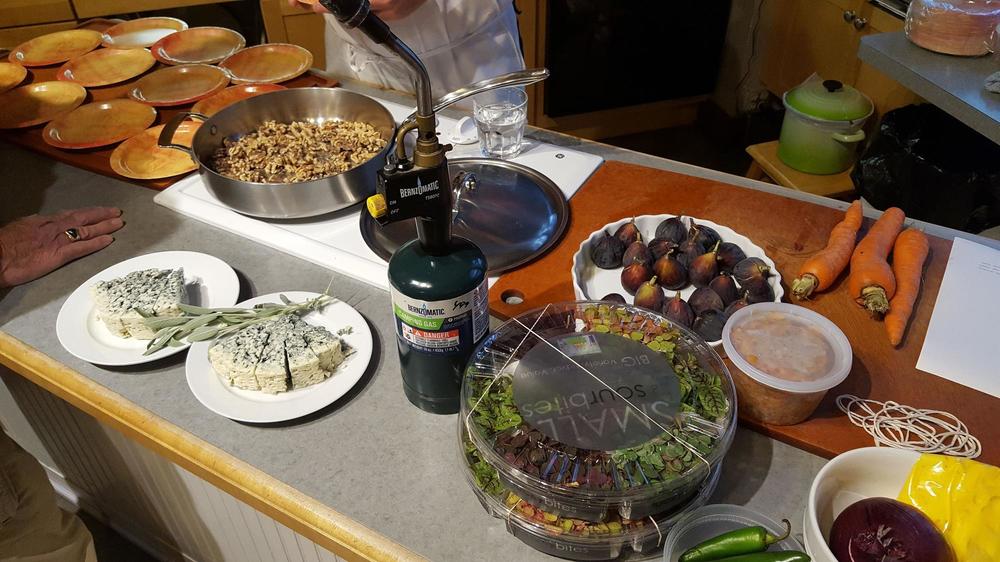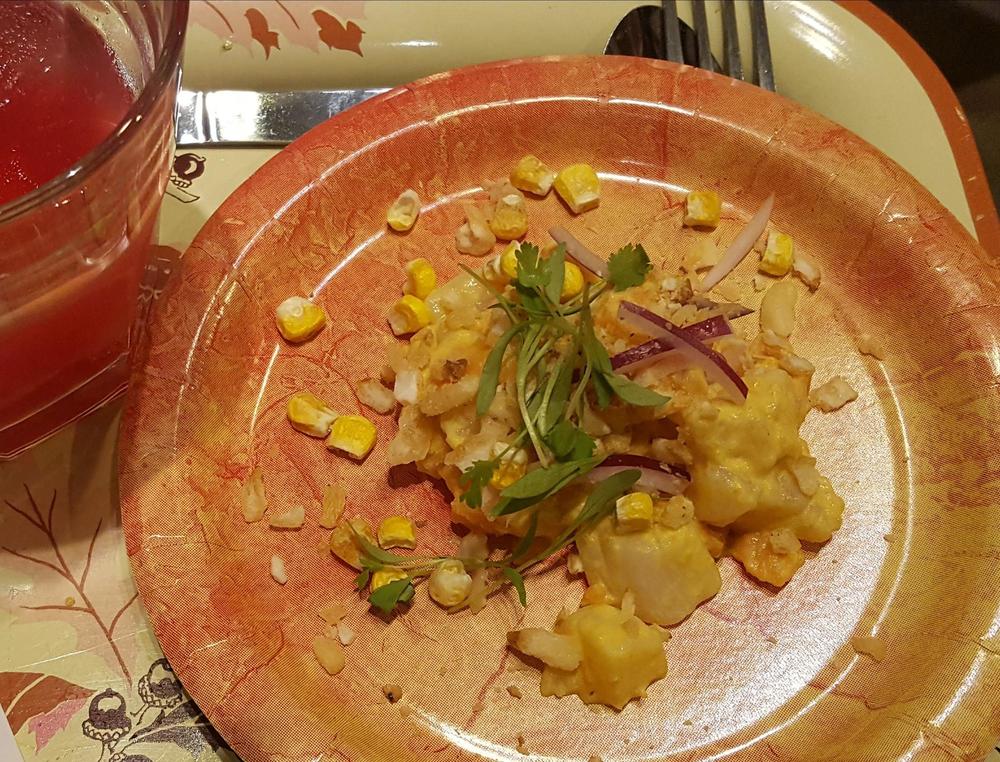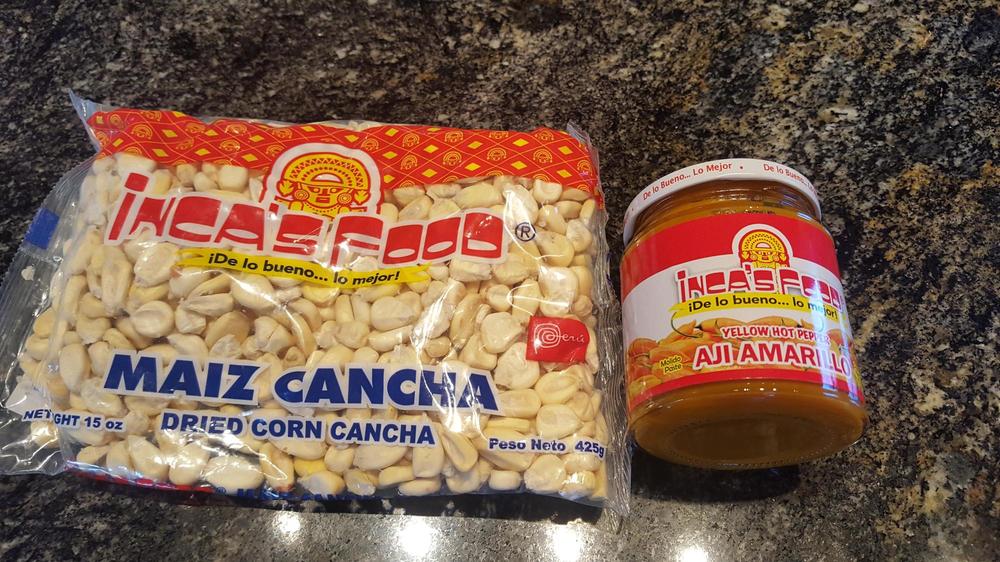-
Posts
13,575 -
Joined
-
Last visited
Content Type
Profiles
Forums
Store
Help Articles
Everything posted by Smithy
-
I just checked our recent romaine purchase, and it came from Santa Maria. Different agricultural area. I think we're safe.
-
Thanks for the recommendation! It looks as though this show can be picked up in the USA on MSN.com, YouTubeTV, and Amazon Prime Video. There may be more opportunities as well.
-
That's quite an article. Not sure whether to look wide-eyed or nauseated...but thanks!
-
Uhm, maybe? I dunno, but given how easy it's supposed to be to propagate this stuff, it sounds plausible.
-
Do you remember how big it was? Can I keep it in a small pot that won't eat the Princessmobile?
-
The ethnobotanists and food organizations were more in evidence this time than last year, although a few were familiar to me from before. I think the festival map was better marked too, to show where each could be found. Iskashitaa Refugee Network is, to quote from their website, I like the social purpose. I also like the fact that they harvest / glean local food that would otherwise go to waste. If you travel around the southwestern communities like Tucson, Phoenix, and nearly anywhere in the L.A. Basin, you'll find that there are backyard trees planted by an earlier generation and no longer loved. There are abandoned farmsteads with growing crops. There are, of course, the native plants that flourish and provide food if you know what to do with it. Iskashitaa works in the Tucson area to get that food to people who need it. I have already noted that we came loaded with ridiculous amounts of food from home that somehow never got cooked over the summer. We don't need to be buying more; in fact, our shopping has been curtailed to date because of that. Nonetheless I bought these from Iskashitaa. My sister is coming to visit at Christmas, and I look forward to trying the prickly pear/calamondin marmalade with her. She may also like the green tomato relish. The San Xavier Co-op Farm is owned and operated by a local group of Tohono O'odham. I first heard of them because of their growing Sonoran White Wheat and other heritage grains that are used by Barrio Bread, a beloved bakery in Tucson that I didn't manage to visit this trip. Now I have information about the farm itself: where it's located, when it can be visited. They had a table full of items that I couldn't justify buying: mesquite flours, Sonoran white wheat flours, prickly pear syrups, some other items. Aha! They also had saguaro seeds. I tasted some. Nice crunch. They'll go well on rolls, like poppy seeds. I asked the young woman at the table whether she goes out for the saguaro harvest. "Oh yes," she said. Didn't she just about collapse in the heat? I asked. She smiled. "Yes, it's hot -- but we go out, because that's when the magic happens." I wanted to ask whether she meant magic in the figurative or literal sense, but couldn't think of a way to ask without sounding like a dumb insensitive houle/gringa/whatever the term would be to a local Native American. So I made my purchase, thanked her and moved on to the next table. The Farm is on my list of places to visit next time around. Maybe I can learn more then. Maybe somebody here knows. The other place I've wanted to find and visit is the Mission Garden, known as the birthplace of Tucson. The Arizona Sonora Desert Museum works with them and there's an ethnobotany display in part of the ASDM grounds. I've read enough to know that the Mission Garden works to find and revive the old heritage crops: the oldest pomegranates they have found are propagated at the gardens, and it's a strain from the original mission. Same thing goes for figs, and so on. I now know that the garden is organized according to settlement eras. It should be an interesting place to visit. The representatives and their table were on one of the rambling paths and I was happy to find them. "At last!" I said, "I've been reading about you for 2 years! Now I can get some information!" I came away with no pictures of their table (what was I thinking) but with viable native chile and onion seeds, and on my way out they also insisted I take some aloe vera cuttings. There was lively discussion about what to do with it. "Keep it in your kitchen to rub on your wounds when you make a boo-boo!" "Stick them in a pot of soil, and they'll grow!" Some said it's best to plant it right away, and others said that the traditional method was to wait a few days first. By default I'm in the latter camp. The final nonprofit organization that I noticed was the Community Food Bank. Maybe we'll be back in time for their Farm to Table Dinner. Maybe one of you readers will find this flyer valuable.
-
I'll get back to the Sonoran Desert Harvest festival, but first I'd like to sing the praises of this prickly pear juice and what it does for my breakfast. My latest batch of yogurt, made just before we left home, has an off-flavor that, truth to tell, has discouraged me from making yogurt lately. I'm sure it isn't dangerous, but it is exactly the flavor that puts us off most "Greek feta" cheeses in this country: what my darling calls a petroleum flavor. I don't know why it happens: time and temperature? Contamination? The starter culture has come from commercial yogurts that I like and that don't have that flavor. I've been on the brink of throwing away the yogurt. Yesterday I got the idea to try the prickly pear juice with it, along with my darling's breakfast fruit salad. Bingo! That prickly pear masks or cancels the off-flavor and makes the yogurt taste good; the fruit adds extra flavor. When I remember to add the flax flakes, I get extra fiber and omega-3 fatty acids. It all tastes good... ...and isn't it beautiful?
-
That reminds me of signs I've seen on road trips: "EAT HERE, GET GAS" and "DIESEL FRIED CHICKEN"
-
I got the card announcing the 2nd Annual Sonoran Harvest festival at the Arizona Sonoran Desert Museum. I thought long and hard before deciding to go. As I noted last year, the first festival was so disorganized that I was disappointed in much of it. Still, there had been bright spots. Maybe this year would be better as they got the kinks worked out. Furthermore, I'd focus on the food. Never mind the animal enrichment shows, unless I could fit them in; first things first! It was better. This year I thought I got my money's worth, even though the price for admission, food and beer had gone up from $45(?) to $60. I'll tell the story in several stages rather than one long post as last year. The first bright spot was that the energetic and inimitable Sarah Lee-Allen, whose presentation features harvesting and processing Sonoran foods with "A Pot, Pillowcase, Blender & Butane", was a featured speaker in the auditorium. Last year I stumbled over her display at a small table somewhere along some trail. This year she had a sound system, an overhead projector, a large table and a specific time slot. This is what I mean about how animated she is! She is a funny speaker and told great stories as she illustrated her points. When she talked about harvesting fruit from the saguaro cactus, she noted that the Tohono O'odham harvest it with a tool called a kukuipad that is made from the ribs of dead saguaro. You can see a picture of one here, in the lower right photo. Removing the fruit involves a twisting motion, not cutting, and the cross-member at the end of the pole is the trick. She explained that she didn't have one of those, but she has a clever husband who assembled a telescoping metal pole and a paint roller holder to do the same work. "And when it was all done," she said, "we were ready to paint the house!" She talked about harvesting prickly pear fruit and how to process it. There's been quite a bit of discussion, some in this topic and some in the Foraging for Favorites topic, about my recent experiments with it. Some things she said were valuable information. She rinses the tunas a few times before bringing them into the house; that eliminates a lot of the glochids and keeps them from being tracked into the house or making a mess of the sink. Then she whirrs the fruit in a blender and strains it all through a pillowcase. She used to use multiple layers of cheesecloth, multiple colanders, and multiple straining stages. Then she realized that a pillowcase would do the same trick. It's a good shortcut, she said. She went on with cautionary notes: yes, you can reuse the same pillowcases, year after year, BUT...(a) turn them inside out and shake them outside, well away from the house, lest you inadvertently plant a bunch of seeds nearby; (b) wash them and do a double rinse of the laundry; else you'll end up with traces of pulp and glochids and seeds inside your washing machine. "Do not shortcut the shortcuts!" she cautioned, more than once. Toward the end of the class, when we were all crowding around the table and tasting samples, she asked whether anyone had tried the freezing method. I said I had, with little juice gotten out of the process, and I'd had to steam the fruit instead. "The fruit has to be frozen all the way through to disrupt the cell structure," she said. I think the Princessmobile's freezer just doesn't get cold enough. She also said that in side-by-side taste tests of juice extracted from frozen tunas vs. juice filtered from blended tunas, she and a class had thought the blended and filtered tunas produced a brighter juice. I don't remember what she said about steaming, other than that she didn't prefer that method. She processes hundreds of pounds of prickly pear fruit during the season (she has a dedicated freezer for the pulp and the filtered juice) and they drink some every day. She asserts that her husband's cholesterol dropped dramatically, to the point of no longer needing medicines, some months after they had begun their daily cuppa. Jay, her husband, has come up with some excellent recipes for using the juice. I still have to try making his prickly pear ice cream, but I carry the recipe with me. Other harvest treats were smoked cholla buds and three syrups (mesquite, prickly pear, and saguaro) that I didn't manage to photograph but I tasted or smelled. What I remember about the mesquite harvest and getting syrup from it is that you need the flavor from the pith of the pod. Don't bother popping those pods open and scraping them! Throw them into a pillowcase and crack them, then dump the lot into water to boil. Filter the remains in the pillowcase. To see which mesquite gives you the best flavor, taste them. If you don't like the flavor, don't mess with it any more. Velvet mesquite and Texas' honey mesquite are the preferred varieties, in her view. One cautionary note at this point was that mesquite pods that have been lying on the ground can develop a fungus that, if ingested, will ruin your day and maybe your life. You should be picking the dried pods from the tree instead of picking them up off the ground. Unfortunately for her, the gardener in her neighborhood trims the trees higher than she can reach! To get around that, she waits until the day after the gardener has come by and cleaned up under the trees. The next morning, whatever is lying on the ground is still safe; it's only been there overnight. Her smoked chollim smelled wonderful, but I didn't make notes on how she did that. I did take tastes of these tequila mesquite cocoa balls, though. I plan to try making these. Won't they make a good holiday treat? They're a nice twist on the cocoa rum balls of my early 20's.
-
I have some leftover moles from a cooking class I took in Duluth, although they've been frozen and thawed so many times I may discover that they're shot by now. They ARE a lot of work, and this hand-ground, canned powder that FauxPas gave me takes all the work out of it. I'm sure, given time, the stuff could go off -- after all, it has nuts in it -- but it seems to me that keeping some on hand would be a good way to have mole available without having to start a day ahead of time. Okay, half a day ahead of time .
-
FauxPas and I nearlyl blurted it at each other when we met up that day: burgers are fine (they are especially my darling's preference) but there's so much else to explore! Even along Speedway Blvd, the road we had traveled for our shopping expedition, I kept exclaiming, "Oh look! There's an African restaurant! I wonder what that's about!" "Hey, there's another Middle Eastern place!" "Hey, Korean!" and for those of you who don't know, Tucson is a pretty big place. There's a lot to explore and I hope we branch out more. Since I haven't gotten on to the next big topic, I want to show my first experiments with the mole mix and the red jalapeno sauce FauxPas gave me. Here's a refresher on the mole mix, complete with instructions: I admit it. I can be cheap, and I wanted to make this stuff last. Did I really have to use the entire can's contents for a single meal? (For those of you who have never made a mole, it is a heck of a lot of work. You can see some examples in eG Cook-Off #9: Mole Poblano.) I decided to try using only part of the can and stretching it with my usual pilaf technique for chicken. I also decided against cooking the mole separately and adding it at the end to already-cooked meats and vegetables. That used two pans, and I wanted to stick to one. Here's the setup: that lovely mole powder; chopped chicken thighs generously seasoned with some of it; chopped red bell peppers and onions; rice (already soaking) and, though it isn't in the picture, chicken broth from the freezer. The instructions say to cook the mole powder in oil before adding the cooked ingredients. The aroma was tantalizing...I remember smelling something much like it in a cooking class I took to learn about moles. Ooh, this was going to be good! See the top half of this next photo: Then I added the onions, then peppers as the onions began to soften, and finally the chicken. Still looks pretty good in the bottom half of that photo, doesn't it? From there I added the rice, broth, and water because I hadn't thawed enough broth. Brought it to a boil, covered, and lowered the heat to a simmer until the liquid was used up and the rice was cooked. This isn't much of a photo, but maybe you can see the air pockets forming through the rice bed to show that it's getting done. The final result... ...was unfortunately insipid. Not enough broth to flavor it properly, waaay too much rice for the dish, and -- alas! -- we could barely taste the mole seasonings. I did not use that half-can well. 😞 Fortunately, the red sauce perked it up, as did salt and (for me) lemon. This is a HOT sauce; a little goes a long way, but I liked its fruity and sweet notes. My darling couldn't taste those fruit notes and resorted to what he likes to call "Sri Lanka" sauce. That's okay...leaves more for me, and I'll enjoy using this. It's been a long time since I made pilaf; it used to be one of my standards, but I had apparently forgotten the ratio of rice to fillings - and rice to broth. I'll remember more next time, but I won't use any more of the mole mix on it. Fortunately, I have half a can left (and the ordering information for that shop). Go back and look at the mole powder cooking in the oil. You'll see it used properly, sometime during this trip. That was a fabulous smell! Many thanks again, @FauxPas!
-
Until recently, avocados were my staple breakfast if I could find good ones at the store. (There's no such thing as a local avocado in northern Minnesota.) When we're on the road I keep an eye out for the local avocados, but I have bought them in stores even when they're labeled as being from Mexico if they looked good. I won't do that now. That breakfast and the salad inclusion isn't worth the human and environmental cost. Thanks for the information and links, folks.
-
The preceding discussion made me think (a) that it would be fun to make my own sodium citrate and (b) that experiment would further delay any attempts at working with the stuff. I bought a package of sodium citrate and today, finally -- yes, it really has taken this long -- had time to play with it and the Melty Cheese Calculator. I love ham in macaroni and cheese, and we had leftover ham that I'd set aside for that purpose. I used an American cheese with onion and garlic, recommended by my DIL; milk was the liquid. I used the calculator to get the appropriate cheese consistency: 300g cheese, 300g milk, 12g sodium citrate. Heated the milk and cheese, threw in the sodium citrate, stirred until it all melted, and added to the cooked macaroni and ham. After baking until the dish was browned and bubbly, we ate. This was a success: quite tasty, and easier than the roux method!
-
The University of Minnesota in Duluth has had an experimental apple farm since the early 1900's that was allowed to go derelict, then rediscovered and revived within the past 10 years. One of their projects a few years ago was an apple DNA project: bring in a leaf from your apple tree, and see if they could trace it to one of the varieties planted in the area. There are scads of apple trees in my area, associated with abandoned farmsteads and old fields. Most of the apples are of the tiny crab persuasion, but some are more sizeable. I took leaves from my favorites. No match. I was disappointed, but I still think it's a neat project.
-
It's raining in the desert! It's raining in the desert! We had a series of much-needed gullywashers last night, and the mountain range about 5 miles away keeps vanishing and reappearing. As a rule when this happens it's due to a dust storm. Today it's due to rain. An artificial watering hole, known in desert-wildlife-engineering parlance as a "guzzler", was as low as I've ever seen it when we arrived a few days ago: the water level was at least 6 feet below grade, and the submerged tank is sizeable. Last night's rain filled it to overflowing. Somebody did excellent survey work figuring out that a seemingly insignificant small watercourse would channel as much water as this one does. But I'm getting ahead of myself; my last post was well before we left Tucson, and there's a lot to tell. First off, let me give the summary on the prickly pear juice. I posted in more detail about it in the Foraging for Favorites topic, here. It doesn't taste tart, as I expected; I get sweet honey and burnt caramel. In fact, I think it needs some tarting up. It's pretty, though. We met with @FauxPas and Mr. FauxPas for lunch one day. As usual, FauxPas had the good suggestions. This time it was a burger joint known for its sustainable practices and ethically-raised meat. This place, Graze Burgers, has several locations in Tucson and one was convenient to a shopping trip my darling and I needed to make. We all agreed to meet for a late lunch, allowing the FauxPas' to get home before dark and us to get our shopping done before eating. The place also sells beer, but it was a bit too early for that. Check out the fresh-cut fries and the dipping sauces! We all enjoyed trying out the various sauces. I'm not much of a ketchup fan as a rule, but I very much liked their Curry Ketchup. I also thought their Sriracha Mayo and their Fry Sauce (with mystery ingredients) were quite good. My burger was good, but got rather lost in the shuffle of all the extras I had added to it. The fries were the star of the plate, as far as I was concerned. My darling's chorizo burger was to his taste, but he complained that it had no cohesion. This led to much merriment on the part of the FauxPas' as to what exactly that meant, and they shared a story about having purchased a high-end grass-fed steak and having it fall apart on the grill. I think the best part of the meal, aside from the company, was the fries. They were world-class: crisp on the outside, soft in the inside, not greasy, very flavorful even before dipping. The company was far and away the best part, though. FauxPas and her mister are always fun. Our conversations are wide-ranging, sometimes about food, sometimes not. I always wish we had more time to visit when my darling and I are nearby! Unfortunately, the campground where we stay has a strict 7-day limit, and this was the time we all had available. Before we parted company, FauxPas presented me with a little bag of goodies: a local paper that shows the goings-on for the week (this one featured breweries, so I'll be saving it), a jar of preground mole sauce ingredients, and a red jalapeno hot sauce. Both the sauce and the mole powder are produced locally. I'll write later about what I have done with them, and what they're like. What a neat gift!
-
I have been looking and looking for that darned recipe, without remembering whose food blog it was in! With that clue, I found the recipe for your Green Goddess Dressing, tucked away in the RecipeGullet archives. I'm also enjoying a pleasant walk down memory lane, reviewing your foodblog. Which brings me to the next, painful thought: back when you did that foodblog, I stlll had tarragon in my garden. I had a very happy tarragon plant that I'd gotten for 5 bucks from a friend at the local farmer's market. She'd commented that she was selling it cheaply because nobody in our area seemed to know what it was good for. What good fortune for me! I took it home, planted it and watched it flourish for years...until my best friend's son came to stay with us one summer. He promised not to mow too closely around our deck pillars, where mint, chives and tarragon grew. He mowed down the tarragon. When I took him to task for it, he said "but I didn't know they were all different". This was 9 years ago, and he's grown into a delightful young man, but that memory still pains me. I've never gotten tarragon to grow around there since. Okay, back to David Chang's ranch dressing... well, actually, I haven't tried that one but it would be interesting to do a taste test comparing my fave, from the Buttermilk and Bourbon Cookbook. I'll post about that in another topic.
-
That worked! I got about 1-1/2 quarts of prickly pear juice from that process, and have been enjoying it. I am a bit surprised at the flavor. I expected something quite tart, but this is more like a caramelized honey flavor. It has a slightly bitter note -- burnt caramel? Diluting with ice; adding a touch of lemon juice; mixing with tonic water (we have no sparkling water as @FauxPas suggested) have all been pretty good. The unexpected flavor may have to do with the age of the fruit, as FauxPas suggested, or with my processing method. I attended a session on harvesting and processing Sonoran desert foods, including prickly pears, last weekend. Without going into too much detail here, I'll note that Sarah Lee-Allen, the presenter, said that the fruit must be frozen solid to get juice from it. My freezer probably didn't do enough of a job to break the cell structure of the fruit. The other thing she said was that in taste tests - comparing the freezer method to simply pureeing the fruit and straining it - the pureed and strained fruit had a brighter, fresher taste. I think she wasn't a fan of steaming because it was too likely to cook the fruit and ruin some of the high flavor notes. How would the rest of you describe prickly pear juice? Did I miss out on some tartness, or is it not part of the flavor profile?
-

Blue Heron and New Scenic Cafe Team Up in Cooking Class
Smithy replied to a topic in The Heartland: Cooking & Baking
The final dish was a beautiful, deceptively simple dessert: Passionfruit Panna Cotta with Lemon and Raspberry Meringues, Oat Crumble, and Flowers. Beautiful, isn't it? The panna cotta was made with passionfruit puree. He noted that if fresh passionfruit is used it needs to be heated to deactivate the enzyme that prevents gelling; commercially prepared frozen passionfruit puree has probably been heat-pasteurized so the enzyme will already be deactivated. I've never made panna cotta before, although I've heard about it for years. His instructions were clear enough that I think I'm going to try a version of this for dessert at one of our winter feasts. Gelatin in cold water; heavy cream and granulated sugar heated enough to dissolve the sugar, then cooled before adding the gelatin; passionfruit puree added; the lot poured into molds to set. The base of the dessert was made from an oat crumble that he'd baked and allowed to cool while the panna cotta was being made. He put plastic wrap, held with a rubber band, at the bottom of each panna cotta mold, then sprinkled enough oat crumble into the ring to cover the bottom. When the panna cotta was ready, he poured about half of the panna cotta into each mold, enough to anchor the crumble, and let that start to set. Then he poured the rest of the panna cotta in and set it to chill and fully set. To unmold, he removed the plastic and rubber band, set the ring on a plate, then gently warmed it, using a small torch, so the mold would release. So here's the "deceptively easy" part, and the part I doubt I'll realistically do: he had already piped miniature lemon meringues and raspberry meringues to use as decorations. Each panna cotta got 2 of each of those meringues. The raspberry was sweet and tart; the lemon was tart and sweet; the panna cotta was creamy and sweet; the fresh raspberry garnish set it all off. It was lovely. It was a perfect ending to a delightful class. Here, to conclude my writeup about the class, I'll turn around and show you a bit of the goodies from The Blue Heron Trading Company. This is the sort of stuff we perused during break time. There's a discount for class-takers on the evening of any given class. I expect they do good business! They always get extra money from me. I do not have a business affiliation with either The Blue Heron Trading Company or The New Scenic Cafe, but I think they're both wonderful places. If you're ever in Duluth, Minnesota, I recommend you check them out. -

Blue Heron and New Scenic Cafe Team Up in Cooking Class
Smithy replied to a topic in The Heartland: Cooking & Baking
Warmed Black Mission Figs in Browned Butter Maple Sauce, with Danish Blue Cheese, Sage and Ciabatta The penultimate dish was one Scott says is a perennial favorite at the restaurant, to the point that people are disappointed when they can't get it. "We drove all the way up from The Cities for this!" they cry, and he has to disappoint them by pointing out that the figs simply aren't available then. Only fresh black mission figs will do, and when they aren't in season, they simply aren't in season. Here's the initial setup, although the carrots and the aji amarilla sauce near the right weren't part of this dish. The butter maple sauce was made by melting butter over medium heat, stirring frequently to keep it from burning, until the solids began to turn a light- to medium-brown color, then turning off the heat. After the butter was allowed to cool slightly, maple syrup was added: 1-1/4 cup maple syrup for 1 cup butter. He whisked it together, brought it to a boil, then took it off the heat. Some of the sauce was then used to warm the figs (quartered or cut smaller, depending on their size) and some toasted walnuts. The figs were simply warmed, not cooked, in this sauce. To plate, he put a wedge of cheese in the center, surrounded it with carefully-spooned figs and walnuts, and poured more sauce over the top. The garnish was a few sage leaves, and the accompaniment was slices of warm ciabatta. There had been oohs and ahs of anticipation over this dish. It was clear that several members of the class had had this at the restaurant and were eagerly awaiting it. A few of us were outliers, though. One woman, when prodded for a response, said, "I thought it would be more special!' to general laughter and a few groans. I must admit that this was my least-favorite dish. I'm not a big fan of blue (or bleu) cheese, and to my tastes the strong cheese didn't necessarily play well with the very-sweet figs and sauce. For that matter, I'm not a big fan of figs or maple syrup either. That said, the maply buttery sauce with the toasted walnuts was excellent. I'll probably look for other applications of that sauce. The sage was a lovely addition. -

Blue Heron and New Scenic Cafe Team Up in Cooking Class
Smithy replied to a topic in The Heartland: Cooking & Baking
I just realized that Thanksgiving is coming up fast, and Scott's class on a "New Scenic Feast" was in September! I'd better get this finished up so y'all can see the rest of his ideas. Peruvian Ceviche used the basic approach to ceviche, but added elements that he said were more typical of Peru than of Mexico. I'll get to those elements in a moment. For the ceviche, it's a fairly standard acid / salt / sugar cure (I admit I generally don't use sugar in mine, but I may in the future). He used scallops in this dish, and was emphatic that dry-packed scallops are the way to go. I don't think I've ever seen them in Duluth, but he noted that you can get anything ("anything!" he emphasized, with a wry grin) from Amazon. The Peruvian elements were fingerling sweet potatoes roasted in olive oil with a bit of salt and pepper; aji amarillo, and maiz chulpa. Sweet red onion slivers and bitter baby greens finished the dish. I forget what drink he paired with this; it might have been his "Switchell" which was apple cider based. I didn't take good notes on it. It had something sweet - maple syrup? - and something carbonated - ginger ale? - sorry I don't remember more. It was tasty, but I was more interested in the food and he didn't include drink recipes. Two ingredients were brand-new to me, and specifically Peruvian. The maiz chulpa is a toasted, crunchy, dried large-kernel corn. The nearest equivalent familiar to most of us in the USA would be Corn Nuts, but since I don't like them and I did like these, they can't possibly be similar. (Don't confuse me with the idea that I should maybe try something again after 30 years! ) They weren't as tough as I remember Corn Nuts, but they added a nice crunch. The aji amarillo was a smooth sauce made from yellow bell peppers that had been roasted/blistered, then peeled, seeded and chopped. They were blended with green onions, mayonnaise, sour cream, queso fresco, ketchup, lime juice, a touch of salt, and aji paste. What's aji paste, you may ask? Well, it's that other Peruvian ingredient. It's a paste made from aji amarillo chiles, and it's hot. It adds a nice kick. He said that it's a bit reckless to try eating it straight. I didn't get the chance to try that yet, but I certainly enjoyed the finished dish. And yes, you can get the maiz chulpa and the aji amarillo paste on Amazon, and yes, of course I did. Actually, I got the slightly narrower maiz cancha. According to this article, they're both toasted Peruvian corn, just a slight different variety. -
Well, I hardly needed it, given my recent acquisition of Sister Pie !
-
Huh. I too am a Prime member, but the Betty Crocker book comes up as $9.99 for me in Kindle. Saved me some temptation, anyway.
-
I know you've posted this trick before, but it bears reiteration anyway. I think it's a great idea.
-

Your Daily Sweets: What Are You Making and Baking? (2017 – )
Smithy replied to a topic in Pastry & Baking
That looks delightful, Kim! You sent me down a rabbit hole looking for the recipe(s). For those who also would like to know more about them, here is a link to @Lisa2k's original post. In a later post, she notes that the actual recipe is in her blog, linked in her signature. Ah, here it is. -

Ecuador During a State of Emergency - Surfing the Shortages
Smithy replied to a topic in Food Traditions & Culture
Speaking as a host, I think the best thing we can do to stay true to the original intent of this foodblog (documenting the acquisition and sharing of food during a time of short supply and stress) is to simply...wait...and stop with the political speculation. It's difficult, I know. We're all worried about her. But even with the more relaxed rules that apply to food blogs, this has strayed far from food.




